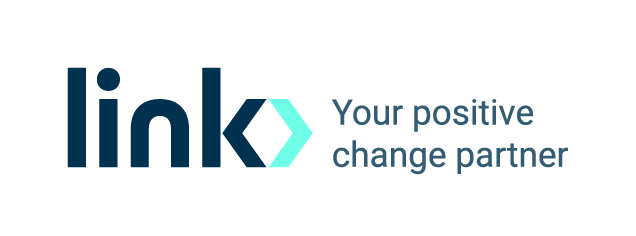
Bamboo is often cited as a safe and versatile sustainable alternative to more environmentally damaging materials like timber and steel. But, as with so many things in life, it's not quite that simple.... This week we dig deeper into the story of Bamboo to discover exactly how sustainable it really is:
A versatile, natural product
Bamboo is a fast growing and renewable tree-like grass. It needs little maintenance to farm as it doesn’t need any pesticides to grow. What’s more, its versatility means that it can be used to make a wide range of products. You can find bamboo coffee cups and bamboo alternatives to plastic straws. Plus clothing, flooring, furniture and of course, toothbrushes. There are over 1,200 species of bamboo in existence and most are highly adaptable. Bamboo is able to grow in Southeast Asia, Africa, Latin America, and the southern regions of the USA.
It is considered a super plant and is often labelled ‘the world’s most renewable material’ since it’s the fastest-growing woody plant in the world. It can grow up to four feet in one day, it absorbs five times more carbon dioxide and produces 35% more oxygen than a similar group of trees. To thrive like this, bamboo requires no pesticides and little water; especially compared to cotton crops. When bamboo is harvested, the plant regenerates itself very quickly and it also has erosion reducing and soil nourishing qualities.
Eco-friendliness & sustainability
Currently, the only commercial scale production of bamboo takes place in China which raises the biggest concern. It means that the majority of bamboo products have been shipped from across the globe. Eco or not, the distance a product has to travel greatly influences its carbon footprint. So far, it’s proven quite difficult to objectively measure how bamboo is grown and harvested. It’s likely that farmers do use chemical pesticides and fertilisers on their crops. This is to increase yields and income, regardless of the fact bamboo doesn’t need chemical help to grow at a natural rate. Meanwhile, the high-demand for bamboo, within China and globally, can negatively impact ecosystems. Farmers may cut down natural forests to make way for bamboo plantations which leads to the destruction of the natural habitat of already vulnerable wildlife such as pandas.
Bamboo is an incredibly strong yet lightweight material. Especially when compared to wood and steel. In Asia, it’s used in place of steel for the construction of buildings and roads or to reinforce concrete. As it’s technically a grass, not a tree, there are no weak points along its length. This makes it stronger and more durable than even the toughest hardwoods. Because of its growth rate it can be harvested every three to seven years. Typically, timber is harvested when trees are around 30-50 years old. It also takes less energy and other resources to produce bamboo over wood or steel.
Production Methods can have a Negative Impact
Undoubtedly, if we’re living sustainably, bamboo ticks a box. It’s a more sustainable and hard wearing alternative for furniture, flooring and many household items. Moulded bamboo is also an eco-friendly alternative for plastic kitchen utensils and tableware. As long as it’s free from melamine, which is considered toxic by many. But as with anything green, the answer to the question, is bamboo sustainable, isn’t clear cut or straightforward.
Bamboo looks like a sustainable solution for the textile industry. But its use as a fabric is actually where this grass falls short. Turning rough bamboo grass and shoots into a usable fabric is not an easy feat. It requires an intensive and chemical heavy process to produce the fabric. In industrial textile production, cellulose-heavy bamboo pulp is dissolved in a chemical solution. It’s then pushed through a spinneret to produce a yarn which is chemically solidified. Once the yarn has been produced, it’s often treated with dyes, bleaches or formaldehyde. There is an alternative mechanical process that can turn bamboo into textile fibres. This process is considerably greener as significantly fewer resources and chemicals are used, and it involves shredding, mashing, and combing before spinning the fibres into a yarn.
Unprocessed bamboo is a sustainable alternative to timber and steel. We can maintain bamboo’s sustainability by using it for furniture, flooring and utensils. It’s true that bamboo is very lightweight therefore importing it has a smaller carbon footprint than importing heavier materials like wood. . Taking into consideration the above it is of crucial importance to pay attention to the processes at the production stage of the bamboo items. As with any material, Bamboo’s sustainability requires to understand the different phases of its lifecycle.
Bamboo Fact File[1]:
- The size of bamboo depends on the species. Largest species of bamboo can reach 1300 feet in height.
- Individual stems of bamboo are called culms. They arise from the underground rhizome and emerge from the ground fully developed.
- Flowers of bamboo are rarely seen. Some species of bamboo develop flowers after 65 or 120 years. Interesting fact about flowering is that all plants of one bamboo species develop flowers at the same time, no matter where they are located in the world.
- It can develop from the seeds arranged in clusters at the end of the branches.
- It is the fastest growing plant on the planet. It can grow 3 feet in height in 24 hours under appropriate climate conditions. Unlike other woody plants, bamboo reaches maturity after only 3 to 5 years.
- It does not require fertilizers for optimal growth. Discarded leaves of bamboo provide all needed nutrients when they start to decompose.
- Bamboo has wide and strong root system which holds the soil stable and prevents erosion of the ground.
- Young shoots of bamboo contain toxin called taxiphyllin. Because of that, bamboo needs to be cooked (high temperature destroys toxin) before consumption.
- Various animals on the planet used bamboo in their diet. Panda's diet is based on bamboo exclusively, while mountain gorilla and lemurs of the Madagascar eat bamboo to enrich their regular diet.
- It is used in folk medicine to treat infections and to accelerate healing of the wounds.
- It has stronger structure than steel and it is widely used in the construction industry.
- Bamboo can survive more than 120 years in the wild.
[1]https://www.softschools.com/facts/plants/bamboo_facts/563/#:~:text=Bamboo%20is%20the%20fastest%20growing,dioxide%20compared%20to%20other%20plants.
Do you want to learn more about sustainable materials and generate ideas to create more environmentally friendly marketing campaigns? ASL's experts are on hand to provide guidance and support. Why not book a free Sustainability Workshop for your marketing team - we will build a bespoke, interactive workshop session tailored specifically to your brand, delivered in person or online, as required.
Contact us to book your Sustainability Workshop today
ASL Global is committed to conducting our business in a responsible & sustainable way. Acting with passion and integrity, our people work with customers, suppliers and other stakeholders to make a positive contribution to social responsibility and environmental sustainability in communities around the world.

Discover more about our ONE WORLD initiative







